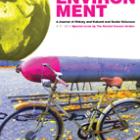Esselborn, Stefan. “Environment, Memory, and the Groundnut Scheme: Britain’s Largest Colonial Agricultural Development Project and Its Global Legacy.” Global Environment 11 (2013): 58–93. Republished by the Environment & Society Portal, Multimedia Library. http://www.environmentandsociety.org/node/7582.
In the late 1940s, the British state embarked on an attempt to convert about 12,000 square kilometers of bush land in remote regions of colonial East Africa into a peanut monoculture. The project, which became known simply as the “Groundnut Scheme”, constituted one of the largest colonial agricultural development initiatives in history, as well as possibly the most spectacular failure in this field. While the technical reasons for this are relatively well known, this article focuses chiefly on perceptions and memories of the Scheme, trying in particular to trace the different functions that were assigned to the social and ecological landscape of Tanganyika. As the Scheme was from the outset targeted as much at Western discourses and representations as at the actual situation in Tanganyika, three layers of context are distinguished, corresponding broadly to different geographical scales as well as specific groups of actors. On the imperial level, the project’s entanglement in British politics tended to obscure its geographic and historical specificities, transforming the transformation of Tanganyikan landscape into sets of statistical numbers, and ultimately into a largely decontextualized political buzzword. Secondly, in the framework of the international expert community, technological enthusiasm depicted East Africa as an “empty” region formable at will, despite scientific evidence to the contrary. Ironically, the mistakes and miscalculations resulting from this were so numerous and at times grotesque that they allowed a more general questioning of the basic tenets of agricultural development to be avoided. At a “local” level, the Groundnut Scheme should be understood in the context of attempts to reform the (post-) colonial social order through the modification of agricultural practices and the refashioning of the physical and ecological environment. In this sense, the project became a forerunner of the even larger Tanzanian “villagization” campaign in the 1970s. Different strands of memory of the Groundnut Scheme persist today, although their connection to the physical site(s) of the project is often tenuous. On the other hand, the Scheme did transform the social, physical, and biological landscape of Tanganyika, albeit in very different ways and in a much more limited fashion than intended.
— Text from The White Horse Press website
All rights reserved. Made available on the Environment & Society Portal for nonprofit educational purposes only, courtesy of Stefan Esselborn and XL edizioni.


